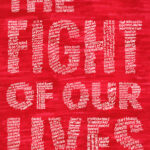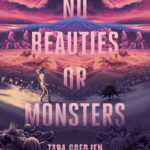
Feature: Into the Wild: Fiction That Finds Its Power in the Wilderness
There’s a reason so many stories begin where the road ends. The wilderness, vast, unruly, and often unforgiving, is a setting that demands more than description. It becomes the story’s pressure point. It pushes characters to extremes, stripping them down until what’s left is only what matters: breath, instinct, memory, survival. And when the setting isn’t just the backdrop but the battleground, the journey becomes something deeper than plot, it becomes personal.
In young adult fiction especially, the wild functions as a mirror. In Be Not Far From Me, Mindy McGinnis throws her protagonist into the Appalachian woods after a burst of rage and betrayal leaves her alone, barefoot, and injured. What follows is a brutal survival story, but also something quieter: a confrontation with shame, endurance, and a version of self that can’t hide behind anything but dirt and determination. The forest doesn’t cause the crisis; it reveals it.
Deserts, too, hold that kind of clarity. In The Canyon’s Edge by Dusti Bowling, a father-daughter hike meant to heal old wounds turns catastrophic when a flash flood separates them. Told in verse, the story captures the punishing silence of the Arizona canyons, hot, dry, echoing with grief and panic. The wild isn’t hostile here so much as indifferent. But that indifference creates space for reckoning.
Other characters walk into the wilderness looking for something, and find something else entirely. In The Other Side of Lost, Jessi Kirby sends a former social media darling onto the John Muir Trail with a borrowed backpack and a hollow heart. What begins as a symbolic gesture becomes a transformation in motion. The Sierra Nevada mountains, inspired by places like Yosemite, offer no shortcuts. Just the next step, and the next, and the truth that no one can hike you out of your own sorrow but you.
Wilderness in fiction also works because it removes the ordinary. In I Am Still Alive by Kate Alice Marshall, isolation becomes survival in the most literal way when Jess is left alone in the Canadian wild after her father is murdered. It’s not just nature she has to outlast; it’s the fear that the person who killed him is coming for her next. The quiet of the forest makes every sound louder. Every movement is a potential threat. The landscape tightens the tension like a snare.
Even in more fast-paced thrillers, the setting shapes the stakes. Not If I Save You First by Ally Carter places readers in the icy remoteness of Alaska, where a Secret Service daughter and a President’s son must survive both the elements and a would-be assassin. Beneath the flirty banter and adrenaline is a simple truth: in the wild, no one is coming to save you. You have to figure it out yourself, or not at all.
But nature isn’t always neutral. Sometimes, it feels touched by something else, something ancient, or wrong. In No Beauties or Monsters by Tara Goedjen, the eerie expanse of Joshua Tree becomes a place where memory slips and time doesn’t behave. As Rylie returns to her desert hometown, she’s met with more questions than answers, and the desert itself seems complicit. It’s a story where the land doesn’t just reflect unease, it generates it.
And sometimes the landscape offers beauty so staggering it almost distracts from the darkness unfolding beneath it. In A Murder in Zion by Nicole Maggi, the red rocks and breathtaking vistas of Zion National Park serve as the setting for a murder investigation. A special agent with the National Park Service returns home intending to step away from law enforcement, but when a childhood friend turns up dead in the Narrows, she’s pulled back in. Here, the wild isn’t the antagonist. People are. But the setting matters. Zion’s vastness, its silence, and its sublime scale all underline just how small we are, and how easily secrets can get lost in the canyons.
In all of these stories, setting is not an afterthought. It’s the catalyst, the container, and sometimes the adversary. National parks, forests, deserts, and remote trails aren’t just beautiful, they’re dangerous. Sacred. Honest. They ask something of the characters who walk into them. Sometimes that something is a question. Sometimes it’s a fight. Always, it’s a transformation.
Because in the wilderness, you can’t hide. Not from the weather. Not from the mountain. Not from yourself.
And maybe that’s what makes these stories so powerful.







